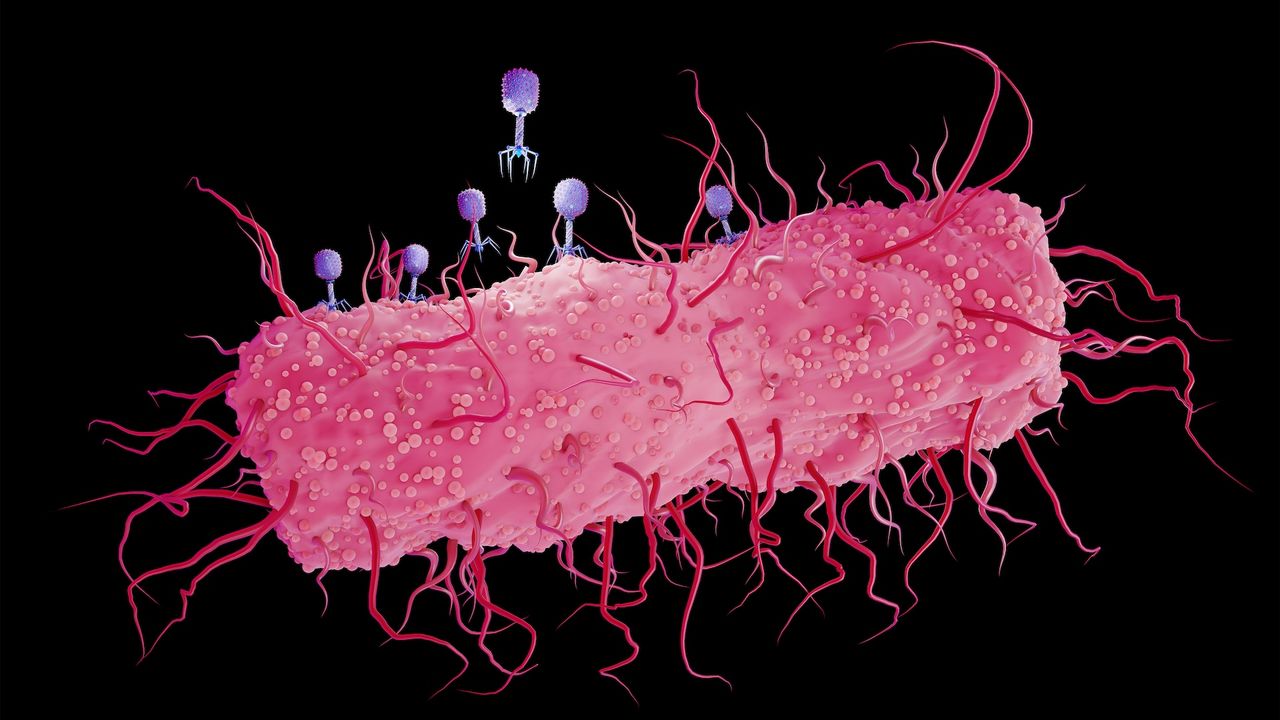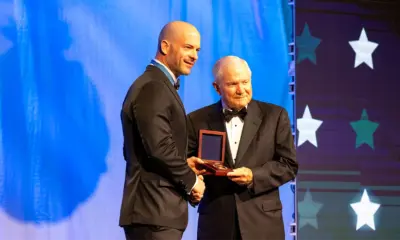Science
Experiment Validates Spontaneous Mutations in Bacteria, Supporting Darwin

A significant scientific milestone was achieved on November 20, 1943, when physicist Max Delbrück and biologist Salvador Luria published groundbreaking research confirming a fundamental aspect of Charles Darwin’s theory of evolution. Their study, conducted at Indiana University and Vanderbilt University, demonstrated that mutations in bacteria arise spontaneously, rather than in response to environmental pressures.
The research, known as the “fluctuation test,” addressed a long-standing debate in evolutionary biology regarding the nature of mutations. Since the publication of On the Origin of Species in 1859, Darwin posited that natural variation occurs randomly among all organisms, with environmental factors selecting the most advantageous traits over time. This theory stood in contrast to the ideas of Jean-Baptiste Lamarck, who claimed that environmental pressures could induce variations.
In the early 1940s, while Darwin’s theory was widely accepted in the context of plants and animals, some scientists speculated that interactions between bacteriophages—viruses that infect bacteria—and their hosts might induce adaptive mutations in bacteria. Delbrück, who had emigrated from Germany to the United States due to the Nazi regime, stumbled upon genetics research while exploring the intersection of physics and biology.
Delbrück’s interest in bacteriophages deepened when he encountered a new strain of bacterium called Escherichia coli in California. He was fascinated by the ease with which individual phage particles could be observed under a microscope. His excitement about the experiment was captured in his oral history, where he recounted the simplicity of observing the effects of phages on bacterial cultures.
In December 1940, Delbrück met Luria at the Cold Spring Harbor Laboratory. Both men had escaped the Nazis and shared a common curiosity for genetics. They decided to investigate whether phages could induce bacterial resistance in E. coli. They faced a challenge in designing the experiment until Luria realized that statistical methods could effectively differentiate between random mutations and those induced by phages.
Their experimental setup involved filling multiple tubes with E. coli and exposing them to phages, followed by serial culturing on plates. The hypothesis was clear: if mutations were induced by the phages, the resistance would appear uniformly across cultures. Conversely, if mutations occurred randomly, the plates would show significant variability in the number of resistant bacteria, leading to what they termed “jackpot plates.”
The results of their study were published in 1943, confirming that mutations in bacteria arise spontaneously. This research not only reinforced Darwinian evolution but also opened new avenues in genetics.
After their initial findings, Delbrück and Luria collaborated with Alfred Hershey, a microbial chemist, furthering their exploration of genetic mechanisms. Together, they revealed that phages contained multiple genes and could exchange genetic information, a process known as genetic recombination. This work eventually contributed to the discovery that DNA is the carrier of genetic information, a finding that earned the trio the 1969 Nobel Prize in Physiology or Medicine for their contributions to genetics.
In light of their findings, it is noteworthy that recent research has suggested that not all mutations are entirely random. For instance, mutation rates in certain essential genes are observed to be lower than in incidental ones, highlighting the complexity of genetic variation. Further investigations using different bacterial systems, such as those involving the CRISPR immune system, may yield results that challenge earlier conclusions drawn by Delbrück and Luria.
The legacy of Delbrück and Luria’s work continues to resonate in the field of genetics, illustrating the dynamic interplay between random mutations and evolutionary pressures, a cornerstone of modern biological science.
-

 Technology4 months ago
Technology4 months agoDiscover the Top 10 Calorie Counting Apps of 2025
-

 Health2 months ago
Health2 months agoBella Hadid Shares Health Update After Treatment for Lyme Disease
-

 Health3 months ago
Health3 months agoErin Bates Shares Recovery Update Following Sepsis Complications
-

 Technology3 weeks ago
Technology3 weeks agoDiscover 2025’s Top GPUs for Exceptional 4K Gaming Performance
-

 Technology4 months ago
Technology4 months agoDiscover How to Reverse Image Search Using ChatGPT Effortlessly
-

 Technology2 months ago
Technology2 months agoElectric Moto Influencer Surronster Arrested in Tijuana
-

 Technology4 months ago
Technology4 months agoMeta Initiates $60B AI Data Center Expansion, Starting in Ohio
-

 Technology4 months ago
Technology4 months agoRecovering a Suspended TikTok Account: A Step-by-Step Guide
-

 Health4 months ago
Health4 months agoTested: Rab Firewall Mountain Jacket Survives Harsh Conditions
-

 Lifestyle4 months ago
Lifestyle4 months agoBelton Family Reunites After Daughter Survives Hill Country Floods
-

 Technology3 months ago
Technology3 months agoUncovering the Top Five Most Challenging Motorcycles to Ride
-

 Technology4 weeks ago
Technology4 weeks agoDiscover the Best Wireless Earbuds for Every Lifestyle





















